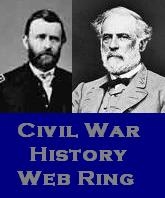 I just finished reading G. Moxley Sorrel’s classic Recollections of a Confederate Staff Officer. A well connected young Georgian, Sorrel makes James Longstreet’s acquaintance on July 21, 1861 literally amid the shot and shell of First Manassas. Longstreet immediately takes to the young man and assigns him to his staff, first as a volunteer captain and aide de camp, and eventually as his assistant adjutant general (AAG) and chief of staff. Sorrel and Longstreet are virtually inseparable from that day forward until nearly three years later when Longstreet is seriously wounded in the Wilderness. During this period, Sorrel will serve Longstreet as his principal staff officer through all the campaigns of the First Corps. Young Sorrel is an amazingly astute and perceptive young officer. In his position close to Longstreet and the high command of the Army of Northern Virginia, Sorell will come to know all of its principal commanders. His amazingly perceptive and evocative sketches of these men are true classics. In all, I found 53 quotes worth collecting from this work. As Sorell himself admits, his work is not a formal autobiography but what he calls a series of sketches. He writes from memory nearly forty years later and while he occasionally admits to lapses of memory his work is amazingly clear and compelling reading. Many of his portraits have found their way over the years into the works of other authors. Those of Longstreet, Lee, and D.H. Hill are well known. However, deep in the pages of his book are perspectives of other lesser known but important soldiers that should again see the light of day.
I just finished reading G. Moxley Sorrel’s classic Recollections of a Confederate Staff Officer. A well connected young Georgian, Sorrel makes James Longstreet’s acquaintance on July 21, 1861 literally amid the shot and shell of First Manassas. Longstreet immediately takes to the young man and assigns him to his staff, first as a volunteer captain and aide de camp, and eventually as his assistant adjutant general (AAG) and chief of staff. Sorrel and Longstreet are virtually inseparable from that day forward until nearly three years later when Longstreet is seriously wounded in the Wilderness. During this period, Sorrel will serve Longstreet as his principal staff officer through all the campaigns of the First Corps. Young Sorrel is an amazingly astute and perceptive young officer. In his position close to Longstreet and the high command of the Army of Northern Virginia, Sorell will come to know all of its principal commanders. His amazingly perceptive and evocative sketches of these men are true classics. In all, I found 53 quotes worth collecting from this work. As Sorell himself admits, his work is not a formal autobiography but what he calls a series of sketches. He writes from memory nearly forty years later and while he occasionally admits to lapses of memory his work is amazingly clear and compelling reading. Many of his portraits have found their way over the years into the works of other authors. Those of Longstreet, Lee, and D.H. Hill are well known. However, deep in the pages of his book are perspectives of other lesser known but important soldiers that should again see the light of day.Sorrel paints a particularly interesting and humorous sketch of William “Little Billy” Mahone. This officer commanded a brigade in the summer of 1862 but is not present at Antietam having been seriously wounded on August 30th at Second Manassas. His brigade however participates in the Maryland Campaign under the command of Colonel William “Gus” Parham. It sustained so many casualties at Crampton’s Gap in the Battle of South Mountain on September 14th that it is temporarily attached to Pryor’s Brigade of Richard Anderson’s division. There, it fought in the Sunken Road.
Upon Sorrel’s promotion to brigadier general, in October of 1864, he is transferred to A.P. Hill’s Third Corps and assigned command of a brigade of Georgia troops. This brigade (commanded at Antietam by Ambrose Ransom “Rans” Wright) is now part of Mahone’s (formerly Richard Anderson’s) division. Sorell says this about his new boss:

"Maj-Gen William Mahone was a Virginian, about forty years of age. His appearance arrested attention. Very small both in height and frame, he seemed a mere atom with little flesh. His wife said "none." When he was shot (slightly) she was told it was only a flesh wound. "Now I know it is serious," said the good lady, "for William has no flesh whatsoever."
If you haven’t picked up this classic work, I urge you to do so. And if you read it long ago, this gem is worth another look. As we leave Moxley Sorrel, I close with the following sentiment made by the good Georgian and loyal aide to James Longstreet.
"An awful lot of lies circulate nowadays about the Civil War, and it is so long ago there is hardly anybody to contradict them."









I haven't gotten around to Sorrel's book but I did quite a bit of research on Mahone several years ago. He turned the Peter Principle on its head. As a brigade commander he was only average, but he was probably the best division commander in the ANV in the last year of the war. An extremely interesting character before, during, and after the war.
ReplyDeleteJohn C. Nicholas
I remember that about Mahone as well. Quite different from A.P. Hill who appeared to have peaked at command of the Light Division
ReplyDelete